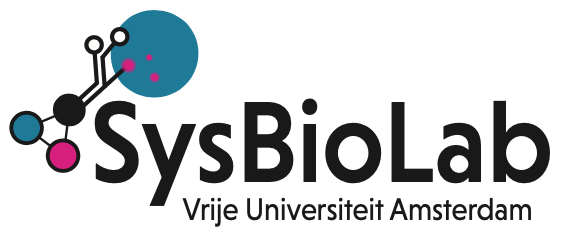Modeling and Microbial Communities
We publish internships via the Biosb-interns mailing list server. If you subscribe to this mailing server you will obtain emails with internship projects in the fields of Bioinformatics and Systems Biology. You can also browse the archive of earlier mails.
You can also contact the team leader Douwe Molenaar directly with questions about opportunities for internships: d.molenaar@vu.nl
For additional internships, see the table below or contact Matti Gralka.
| Project title | Type of research | Supervisor(s) |
|---|---|---|
| Design of a simplified water kefir-based consortium in a chemically defined medium | Experimental (Master) | Sabine Michielsen (s.michielsen[at]vu.nl) |
| Microbes occupy most natural niches. They are typically in close proximity to one another and often form interactions ranging from antagonistic to commensal and even mutualistic. As evolution often works on the level of individual benefit, the onset of antagonistic reactions is relatively easy to explain. Microbes may, for example, scavenge nutrients from the exometabolome of nearby species. While mutualistic interactions often increase growth of both interaction partners through division of labour and specialisation, the downside is that the interaction partners become dependent on one another for nutrient production. For this to happen organisms need to have access to each other for an extended period. Due to this, mutualistic interactions may form more readily in a spatially structured environment. An example of a microbial community grown in a spatially structured environment is the water kefir community. A community typically used to ferment a mixture of tap water and table sugar supplemented with a piece of fruit into water kefir. In its original state, the water kefir community contains approximately 30 species, which makes it difficult to uncover underlying interactions. One way to study interactions in water kefir is by simplifying the community and establish which community members are essential. The aim of this project is to design a simplified spatially-structured water kefir consortium, which will be used to study interactions between consortium members. During this project you will: - Characterize potentially interesting strains (based on genome and metagenome data) isolated from the water kefir community. - Look for interactions and exopolysaccharide production in co-cultures - Design a simplified water kefir consortium and follow stability and aggregation over time using flowcytometry and microscopy |
||

Recent Comments